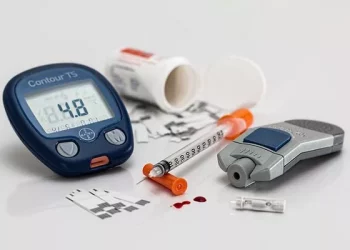Estimated Average Glucose (eAG) is a relatively new metric in diabetes management that provides a more intuitive way to understand long-term blood glucose control compared to the traditional Hemoglobin A1c (HbA1c) measurement. While HbA1c gives an indication of average blood glucose levels over the past two to three months, eAG presents this information in a format that is more relatable to the daily glucose values that patients are accustomed to seeing. Understanding what constitutes a normal eAG level is essential for both patients and healthcare providers, as it helps in assessing the effectiveness of diabetes treatment and in setting appropriate goals for blood glucose management. In this article, we will explore the concept of eAG, how it is calculated, the factors that influence it, and its significance in maintaining good health.
Understanding eAG and Its Calculation
What Is eAG?
eAG is an estimate of the average blood glucose level over a period of time, similar to HbA1c. However, it is expressed in the same units as a typical blood glucose measurement (mg/dL or mmol/L), making it easier for patients to understand. For example, if a person’s eAG is 120 mg/dL, it gives them a clearer picture of what their average blood glucose has been compared to simply knowing their HbA1c percentage. eAG takes into account the fluctuations in blood glucose throughout the day and provides a more comprehensive view of overall glycemic control.
How Is eAG Calculated?
The calculation of eAG is based on a mathematical formula that correlates HbA1c values to average blood glucose levels. The most commonly used formula is: eAG (mg/dL) = 28.7 x HbA1c – 46.7. For instance, if a patient’s HbA1c is 7%, using this formula, the eAG would be calculated as (28.7 x 7) – 46.7 = 154.2 mg/dL. This calculated eAG value can then be used to evaluate the patient’s long-term blood glucose control and compare it to the normal range. It’s important to note that this formula provides an estimate, and there may be some individual variability in the actual average blood glucose levels.
Normal eAG Ranges
eAG Range for Non-Diabetic Individuals
For non-diabetic individuals, the normal eAG range is typically around 70 – 120 mg/dL. This range indicates that the body is effectively regulating blood glucose levels, with minimal excursions into the hyperglycemic or hypoglycemic ranges. A person with an eAG within this range is likely to have a lower risk of developing diabetes and its associated complications. For example, someone with an eAG of 90 mg/dL is within the normal range and is maintaining good glycemic control, which is beneficial for overall health and reduces the likelihood of future health problems related to abnormal blood glucose levels.
eAG Goals for Diabetics
In diabetes management, the target eAG range may vary depending on several factors, including the type of diabetes, the individual’s age, overall health, and the presence of other comorbidities. Generally, for many patients with diabetes, a target eAG range of around 140 – 180 mg/dL is considered reasonable. This range balances the need for good blood glucose control to prevent complications with the risk of hypoglycemia, which can be dangerous, especially in older adults or those with certain medical conditions. However, for some younger and healthier patients with diabetes, a more stringent target, closer to the normal non-diabetic range, may be appropriate if it can be achieved without excessive hypoglycemic episodes. For instance, a young adult with type 1 diabetes who has good diabetes self-management skills and no significant other health issues might aim for an eAG in the range of 120 – 150 mg/dL.
Monitoring and Managing eAG Levels
Blood Glucose Monitoring and eAG
Regular blood glucose monitoring is an important tool for assessing and managing eAG levels. By measuring blood glucose at different times of the day, such as before and after meals, at bedtime, and during periods of physical activity or stress, patients and healthcare providers can get a better understanding of how various factors affect blood glucose and, in turn, eAG. This information can be used to make adjustments to diet, exercise, and medication regimens. For example, if a patient notices that their blood glucose is consistently high after breakfast, they may need to modify their meal choices or adjust their medication dosage to bring down the eAG. Continuous glucose monitoring (CGM) systems can also provide valuable data on blood glucose trends, which can be used to estimate eAG more accurately and make more informed decisions about diabetes management.
Lifestyle Modifications for eAG Control
Adopting a healthy lifestyle is the foundation for maintaining a normal eAG. This includes following a balanced diet, engaging in regular physical activity, managing stress, and getting enough sleep. A diet that focuses on whole, unprocessed foods and limits added sugars and refined carbohydrates can help keep blood glucose levels in check. Incorporating activities like walking, swimming, or yoga into daily routines can improve insulin sensitivity and contribute to a lower eAG. Stress reduction techniques such as meditation, deep breathing exercises, or engaging in hobbies can also have a positive impact on blood glucose and eAG levels. Additionally, ensuring an adequate amount of sleep is important, as lack of sleep can disrupt hormonal balance and affect blood glucose metabolism.
Medical Interventions and eAG
In some cases, medical interventions beyond lifestyle modifications may be necessary to achieve and maintain a normal eAG. As mentioned earlier, this may involve adjusting the dosage or type of diabetes medications or insulin. In addition, for some patients with specific medical conditions or those who are not achieving adequate glycemic control with standard treatments, more advanced therapies such as GLP-1 receptor agonists or SGLT2 inhibitors may be considered. These medications work through different mechanisms to improve blood glucose control and can have a positive impact on eAG levels. However, the choice of medical intervention should be carefully individualized based on the patient’s overall health, diabetes type, and other factors, and should be closely monitored to ensure both effectiveness and safety.
Conclusion
Understanding what a normal eAG level is and how to maintain it is crucial for individuals with diabetes and those at risk of developing the disease. The normal eAG range for non-diabetics is around 70 – 120 mg/dL, while for diabetics, the target range may vary depending on individual circumstances. Factors such as diet, physical activity, and medication use all play a role in determining eAG levels. By maintaining a normal eAG, the risk of diabetes complications can be reduced, and overall health and quality of life can be improved.
Related topics



























